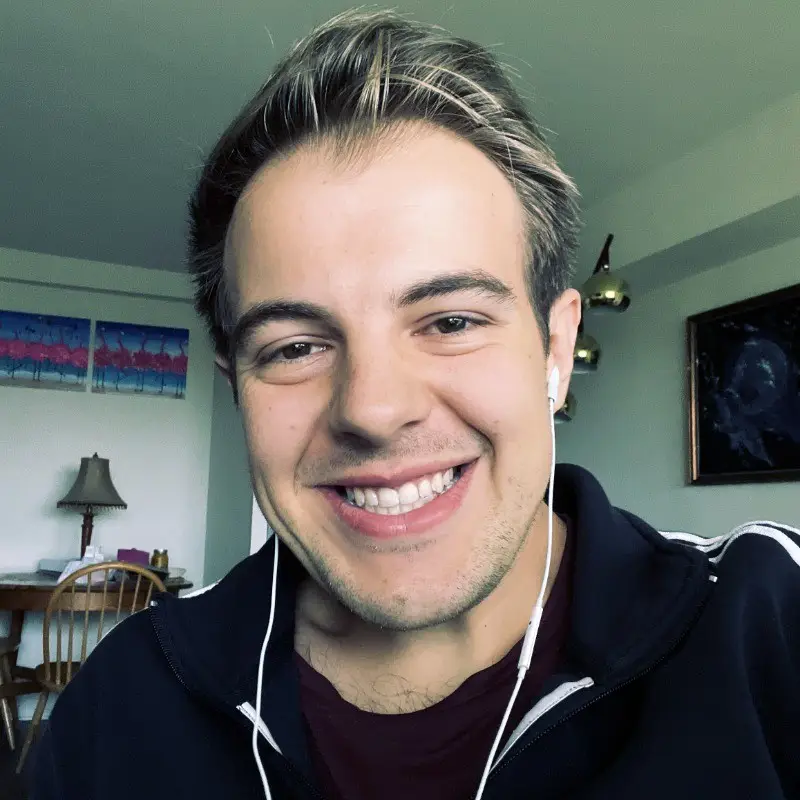
Looking for Web Design Near You? Here's What You Need to Know
Hey there! If you're on the hunt for a web designer in your area, I totally get it - it can feel overwhelming with all the options out there. As someone who's been designing websites for years, I've seen firsthand how the right website can completely transform a business. Whether you're running a small shop, launching your dream startup, or managing a larger company, your website is often the first impression people get of your brand - so let's make it count!

I know budget is often a big concern, so here's a pro tip: platforms like Upwork and Toptal can be great for finding talented freelancers who fit your price range. If you're looking for something more straightforward, the Wix Marketplace has some solid options starting at just $100. But remember - while price is important, it shouldn't be the only factor in your decision.
Quick Takeaways (Because I Know You're Busy!)
- A professional website isn't just nice to have anymore - it's essential for success in today's digital world
- You've got options: from custom-built sites to e-commerce platforms
- Flexible hiring platforms can help you find the right designer for your budget
Let's Talk Web Design Basics

Look, I'm not going to bore you with technical jargon, but there are a few things you should know about web design. Think of it like building a house - you need a solid foundation (that's your design principles), the right layout for your needs (that's user experience), and it needs to look good on any screen (that's what we call responsive design).
Principles of Website Design
Good web design follows specific principles to ensure functionality and aesthetics. Simplicity is fundamental. A clean layout helps users navigate easily. Typography also plays a key role; using readable fonts like Arial or Helvetica improves readability. Color schemes impact user emotions and brand perception.
Consistency across pages adds to a seamless user experience. Elements like navigation menus and buttons should be uniform. Incorporating elements like white space and contrast enhances the overall look.
User experience (UX) is crucial and is affected by the site's speed, ease of navigation, and the clarity of the presented content.
The Role of Responsive Design
Responsive design ensures that a website looks and functions well on various devices, including desktops, tablets, and smartphones. This approach uses flexible layouts, media queries, and scalable images.
Fluid grids adjust content size proportionally, ensuring that elements align correctly on any screen. Media queries apply different styles depending on the device features, primarily the screen's width and height.
Sites built with responsive design offer a better user experience by reducing the need for pinching or horizontal scrolling. They also tend to rank higher in search engines, since Google prioritizes mobile-friendly websites. Examples like this guide highlight optimization as a key component.
Selecting the Right Web Design Company
Choosing a web design company involves considering their experience, portfolio, and client reviews. A reputable company will showcase its past projects, giving insight into their design capabilities and style.
Look for a firm proficient in popular content management systems (CMS) like WordPress. These platforms allow easier updates and management of content. A good web design company will also focus on custom web development tailored to your specific needs.
Effective communication is necessary. The company should understand your brand and goals. They should also provide ongoing support and maintenance. Firms like those in this article underline the importance of planning and content strategy in web design.
Selecting an experienced team ensures that your website will be both visually appealing and functional, meeting modern web standards and providing an excellent user experience.
Building a Strong Online Presence

Creating a strong online presence involves carefully crafting your brand identity and optimizing your website for search engines. These efforts ensure that your digital footprint is both visible and engaging.
Branding and Identity
Establishing a clear and consistent brand identity is crucial. This includes having a memorable logo, using a consistent color scheme, and maintaining a unified tone in your content. A strong identity helps customers recognize and remember your brand.
Develop your brand’s voice and visual elements. This can be done by designing a professional logo and choosing a color palette that reflects your brand’s values. Also, ensure that all your marketing materials, from your website to your social media, share this cohesive look and feel.
Building a community around your brand, such as through social media groups or forums on your website, fosters loyalty. Engaged users are more likely to return and recommend your brand, enhancing your online presence.
The Impact of SEO on Web Design
Search engine optimization (SEO) is essential for increasing visibility. This involves optimizing your website content so that Google and other search engines rank it higher in search results. Important aspects of SEO include keyword research, meta tags, and quality content.
Incorporate keywords relevant to your industry into your website’s content. This helps search engines understand what your site is about and improves its chances of appearing in search results.
Moreover, your website's design should be user-friendly and fast. Slow loading times or complicated navigation can negatively impact your SEO. By making your site easy to navigate and quick to load, you not only improve user experience but also boost your search engine rankings.
Regularly updating your content ensures that it remains relevant and optimized for search engines, supporting your ongoing digital marketing efforts.
Maximizing User Engagement

Effective web design plays a critical role in keeping users engaged. Key aspects include a strong user interface, fast loading speeds, and a layout that drives conversions. Focusing on these areas can help enhance user experience, generate leads, and boost sales.
Speed Matters - A Lot!
Here's something I always tell my clients: a slow website is like a store with a locked front door - people just won't stick around! Fast-loading pages aren't just about making visitors happy (though that's super important). They also help your site rank better in Google searches, which means more people finding your business. It's a win-win!
Converting Visitors into Customers
Let me share a little secret I've learned over the years: the best-looking website in the world won't help your business if it doesn't turn visitors into customers. That's why I'm big on strategic layouts - placing call-to-action buttons where they make sense, using white space to make content easy to read (no one likes a cluttered page!), and making sure important stuff stands out.
I love adding those little interactive touches - you know, when buttons change color as you hover over them or smooth transitions between sections. These small details might seem minor, but they make your site feel more polished and engaging. Plus, they help guide visitors exactly where you want them to go!
Ongoing Website Maintenance and Growth

Website maintenance ensures your site remains secure, functional, and up-to-date.
Regular maintenance includes:
- Updating content
- Monitoring site performance
- Implementing security protocols
- Backing up data
Maintaining a site is crucial for protecting against threats and ensuring smooth user experiences.
Development and website redesign are also essential. Continuous improvement helps adapt to new technologies and user needs. Improving site design can lead to better engagement and conversions.
A solid strategy involves regular testing. This ensures features work as intended and pages load quickly. Performance analysis using tools and analytics helps identify areas for improvement.
Advertising and social media marketing drive traffic. A well-maintained website maximizes the benefits of these efforts by providing a seamless user experience.
Email marketing complements this by keeping users informed about updates and promotions. Updating your site regularly keeps your audience engaged and informed.
Content management is another key aspect. Ensuring all information is current and removing outdated statistics improve user experience and credibility. Regular updates to CTAs can also enhance lead generation.
Managed hosting and support services like Solid Digital ensure uptime and quick issue resolution. This coordination makes sure your site runs smoothly without burdening your IT team.
Incorporating these practices ensures your website not only functions well but also grows and adapts with the changing digital landscape.
Finding Your Perfect Web Designer: My Top Tips
After years in this industry, here's my honest advice: start by asking around. Your business network, friends, even that tech-savvy cousin of yours - they might know someone great. Check out local reviews on Google or Yelp, but don't just look at star ratings. Read what people are actually saying about their experience.
FAQ: Your Burning Questions, Answered!
How do I pick the right web designer for my project?
First things first - look at their portfolio! It's like dating - you want to make sure their style matches what you're looking for. But don't stop there. Ask about their experience in your industry, check out their reviews, and most importantly, make sure you can communicate well with them. Trust me, good communication makes all the difference in a web design project.
Can I get a great website without breaking the bank?
Absolutely! I'm a big believer that good web design doesn't have to cost a fortune. If you're working with a tight budget, platforms like Wix and Squarespace can be fantastic starting points. Or consider working with a freelancer - many talented designers offer more flexible rates than big agencies. The key is being clear about your needs and budget from the start.
What's the typical process of working with a web designer?
Working with a web designer usually starts with a consultation to discuss your project goals and vision. From there, you'll get a proposal outlining the scope, timeline, and costs. Be sure to ask about their process and what you can expect along the way. Regular updates and open communication are key to a successful project.
How do I know if a web designer's style is right for my project?
Take a close look at their portfolio and see if their style aligns with what you're looking for. Don't be afraid to reach out and ask questions - a good designer will be happy to chat about your project and how they can help. And remember, it's not just about finding someone who can make your site look good - it's about finding someone who understands your business goals and can help you achieve them.





















